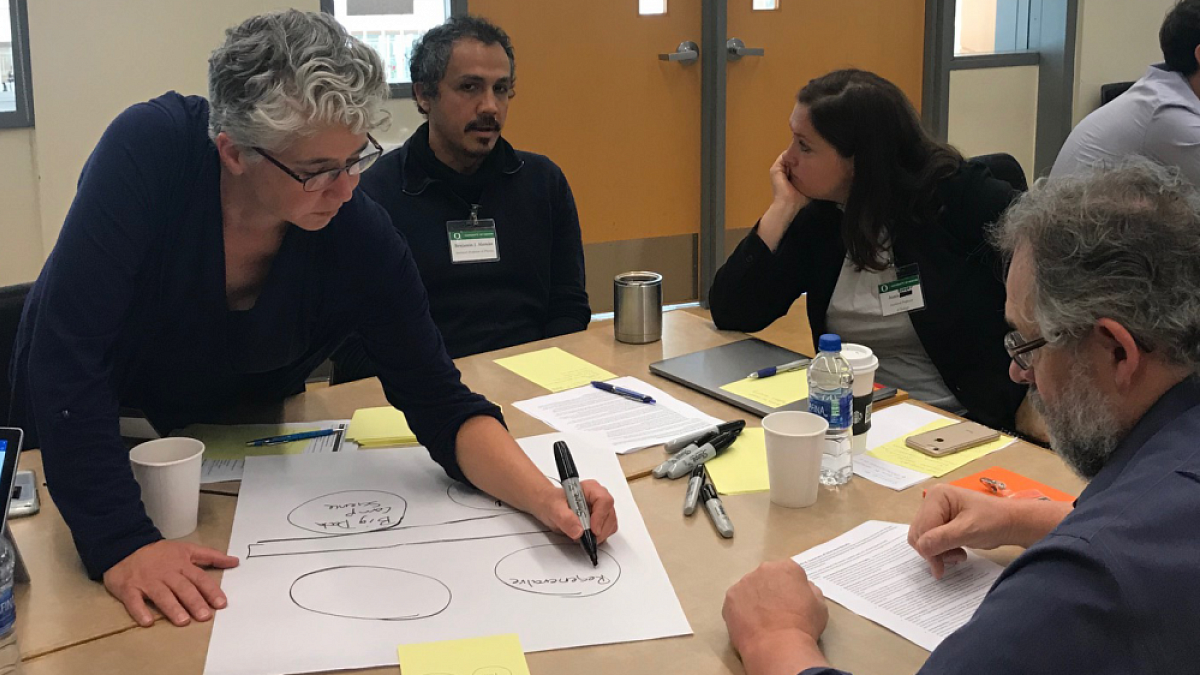The Phil and Penny Knight Campus for Accelerating Scientific Impact rolled out a strategic plan this week that sets the course for the billion-dollar enterprise.
The plan lays out key priorities and areas of scientific focus, outlining the ideological foundation of the Knight Campus in detail. Stakeholders from within the University of Oregon and external partners and advisors of the Knight Campus provided input for the plan through interviews and multiple workshops last year.
“The plan is a major marker not only for the progress we’ve made thus far but more importantly for the future of the Knight Campus,” said Robert Guldberg, vice president and Robert and Leona DeArmond Executive Director of the Knight Campus. “The strategy and tactics in the plan will guide our trajectory as we aim to build on our momentum to construct state-of-the-art facilities and recruit outstanding faculty.”
Announced in 2016, the Knight Campus is a billion-dollar initiative aimed at integrating research, training and entrepreneurship into a single, inclusive, nimble, interdisciplinary enterprise. It is made possible by a $500-million lead gift from the Knights. In addition to the gift, $70 million in state bonds support the campus. The 160,000 square-foot, $225-million first phase is slated to open next year.
To complete the plan, Knight Campus leaders worked closely with Nexight Group, an outside firm that facilitated the planning process.
The plan calls for the Knight Campus to be “imbued by our foundational characteristics as an inclusive, bold, creative, nimble, and collaborative enterprise.”
“With these guiding principles, we will forge ahead to train the next generation of socially engaged scientists and entrepreneurs, define currently unimagined industries, and translate scientific discoveries into lasting societal impact,” the plan states.
According to plan, the the Knight Campus will achieve its “mission of science advancing society through programs, facilities, resources, and people dedicated to accelerating the impact of scientific discovery.”
The strategy is centered on the following priorities integrated in all activities:
- Catalyzing impactful convergent research collaborations.
- Accelerating the innovation cycle.
- Training the next generation of applied scientists.
- Cultivating a diverse and inclusive community.
- Communicating discovery and innovation.
The plan outlines how the Knight Campus will push the frontiers of science using a systems approach to identify the origins of disease and dysfunction and develop new technologies that improve the human condition. The document identifies the following five scientific focus areas:
- Bioengineering.
- Materials for biological applications.
- Precision medicine technologies.
- Prediction of complex biological systems.
- Synthetic biology and molecular engineering.


